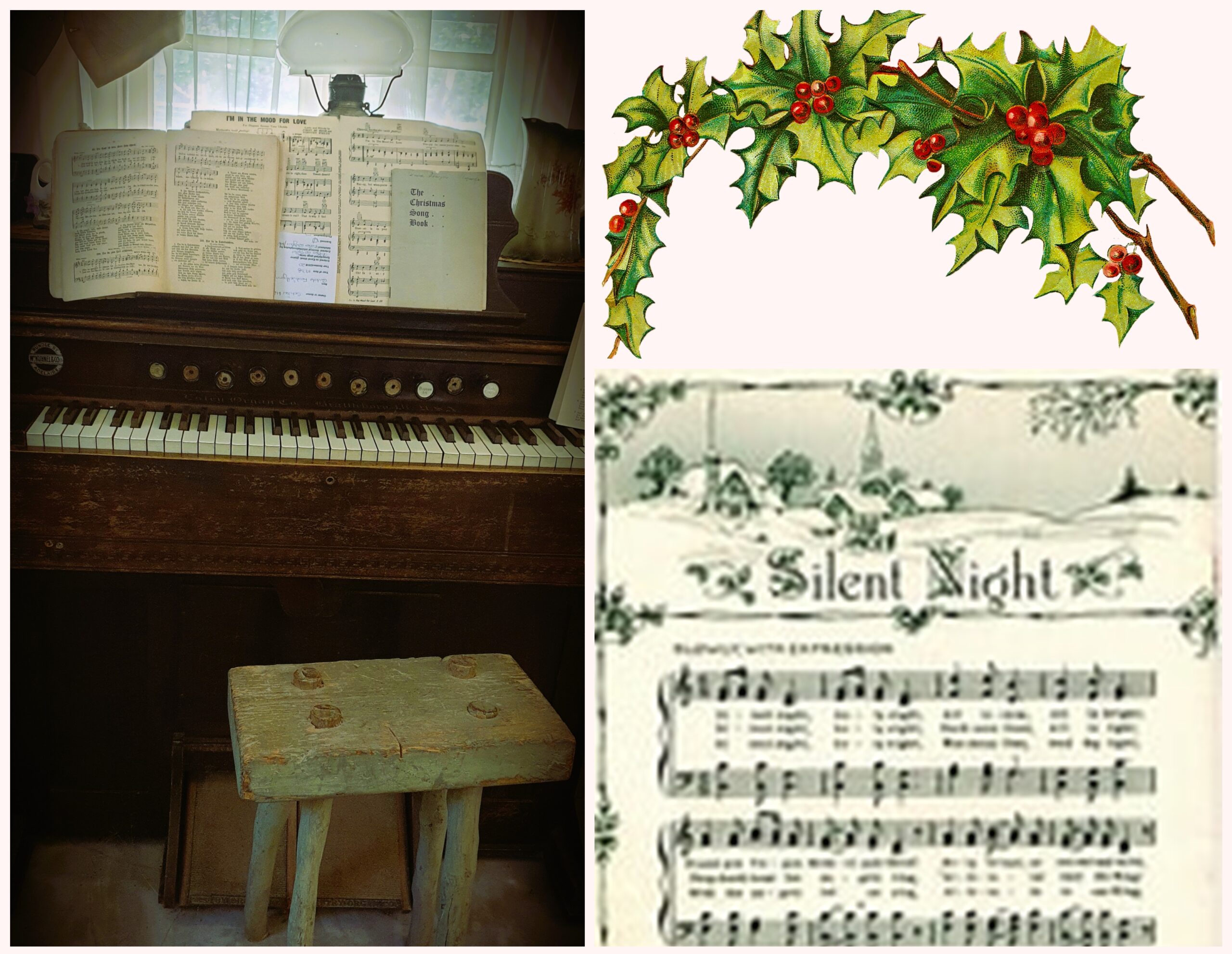Imagine, if you will, that you are a small child again, sitting inside a small country church on a Christmas Eve, long ago in the Barossa. The night is warm and still, and the stars are beginning to shine. Outside there are few sounds, besides sheep bleating occasionally in the paddock, and a dog barking at imaginary intruders.
Aaah, but inside the church! Your little church swells with the sounds of carols, some sung by the choir (who have been practicing for weeks). For other carols, the whole congregation joins in. Almost everybody in the area has come to one of the many churches to celebrate Christmas Eve. There’s the blacksmith, singing heartily (if a little out of tune). There’s Mr and Mrs ……., who spend their Christmas season picking and packing the stone fruits that grace the Christmas tables in Adelaide. There’s the widow from down the street, whose many children are surprisingly well-behaved tonight (perhaps because they’ve just told the story of the birth of Christ in the Children’s Christmas play – or perhaps because, after the service, paper bags of sweets are handed out to all the Sunday School children.) And there’s your own dear mother, her normally tired face lit with a glow of happiness, as she gazes at her clean and scrubbed family, her community, and the magnificent Christmas tree by the altar, lit with flickering candles.

Families would also sing carols at home, using whatever instruments they had. Some may have had a small organ, or harmonium, others would have an accordion, or a guitar. These instruments and the one in the main picture are on display at Luhrs Cottage. Light Pass.
The carols that you are singing are traditional German carols, and you don’t know that we will still be singing many of them in 2022. Carols such as ‘From Heaven Above, to Earth I Come’, ‘O, Christmas Tree’, “O Come, all Ye Shepherds’, ‘Ring, Little Bell’ and “O, Come All Ye Faithful” will be sung by family back in Germany, and for the early Barossa inhabitants, the Christmas traditions provide a special link to the home country.

Listen to Stille Nacht here, beautifully sung by Peter Alexander
But your favourite carol by far is “Silent Night”. First performed in a country church in Austria in 1818, the music was written in a matter of hours. The priest, Joseph Franz Mohr, desperately needed a carol for the midnight mass. He took a poem he had written several years earlier to his friend, Franz Gruber, and asked him to set it to music. Franz was the schoolteacher, and also the church’s choir master and organist (just as your own schoolteacher is). The music needed to be simple, as the church organ had been damaged by floods, and their only instrument was a guitar. Talk about the pressure of the last minute! But within a few hours the music was written and the strains of Silent Night floated out across the cold midnight air. You’ve been told this lovely carol was first introduced to Australia by the teacher at nearby Bethany Lutheran School, Friedrich Topp.
Here in the Barossa, on the opposite side of the world, the air is anything but cold. Inside the church it is hot and stifling, whilst outside the sun-warmed earth still radiates heat. But the beauty of the carols inspires and connects singers across space and time. As you let go of your imaginings of a Barossa Christmas, and come back to the present day, we hope you will feel that connection too, and carry a little of it in your heart this Christmas season.

silent night sheet music
A brief history of Christmas Carols
The idea of singing special songs to mark celebrations goes back to pre-Christian times, and songs were sung to mark the winter solstice. Historian Abi Carter writes1 “As Europe was gradually Christianised, the birth of Jesus began to be celebrated around the same time as the Winter Solstice, and Christianity-themed hymns overtook the pagan songs. In 129 AD a bishop decreed that a song called Angel’s Hymn should be sung at a Christmas service in Rome – that song is generally regarded as one of the first ever Christmas carols.
It wasn’t until the 13th century, when popular Christmas songs in regional languages began to develop, that Christmas carols really took off and began to spread across Europe.
Most of these early songs were originally communal songs sung during celebrations such as harvest time; it was only later that they began to be sung in church and specifically associated with Christmas. In Germany especially, carols increased in popularity during the Reformation. Reformers like Martin Luther liked music and encouraged the use of songs in worship. By the 19th century, carols were being collected and printed in popular collections.”
References
Read Abi’s full article here and listen to the carols:
1.10 traditional German Christmas carols (and their lyrics in English) (iamexpat.de)
Read the story of Silent Night here:
Stille Nacht / Silent Night: The True Story – The German Way & More (german-way.com)
You might also like to check this site out:
https://www.german-way.com/history-and-culture/german-language/german-christmas-carols/




